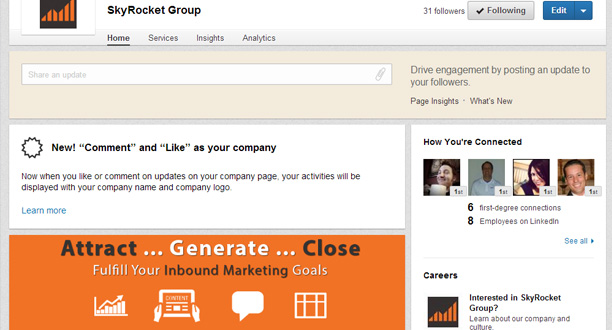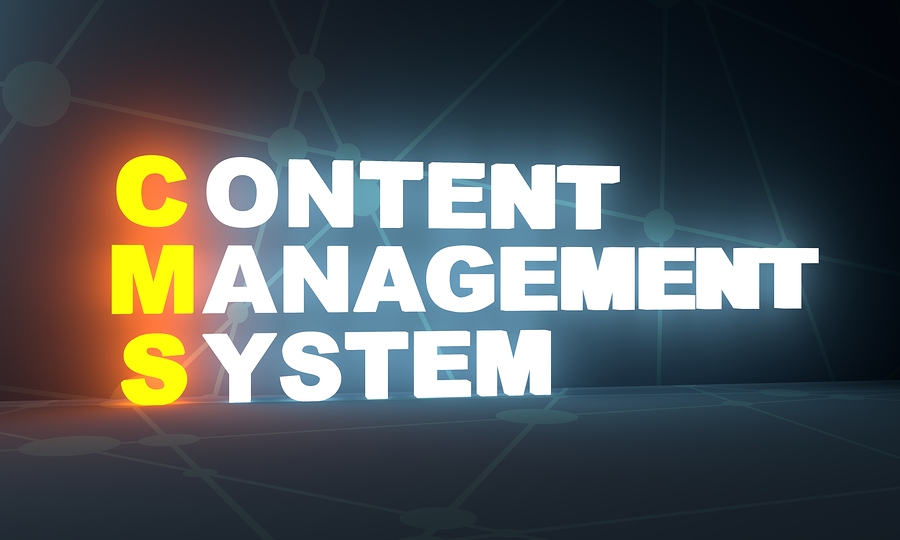
3 Ways to Use LinkedIn for Marketing Your Business
July 25, 2013
Pinterest For Business: 5 Steps Toward Picture-Perfect Success
July 31, 2013Your website is often the very first place a prospective customer goes to learn more about the products or services you offer. It’s the same as in real-life. When meeting someone for the first time, you should always make a good first impression. As a small business, you may not think you need nothing more than a standard website – and you may be correct. But a website doesn’t have to be flashy to be useful.
There are a few things that you can do to your small business website to improve your first impressions with new visitors and get the most out of your online real-estate.
Here are a few web design tips for you to keep in mind:
Get your point across with fewer words
A mistake I see very often is being overly wordy. These days, you only have a few seconds to capture a potential buyer’s attention. The fastest way to lose them is to lead them to a page filled with nothing but text. Many viewers will get overwhelmed with large amounts of text and end up back in the Google search results, probably finding another competitor.
Their time is valuable and you should be aware of that. Try using an image or two to help deliver your message. This helps reduce the on-page content to only the points that matter most to the customer. Set up an image gallery to show your product off or add a short two-minute video if you can. Giving the user various ways to absorb your content can make your site more memorable.
Keep it simple
Having an intro or large flashy features on a website is never a good idea. Loading these types of web features can not only cost way more than what they are worth, but can also increase the amount of time it takes the site to load. Users will only wait one or two seconds before leaving a site when it doesn’t load. Also, too many moving graphics or flashy designs can be hard to read or are distracting.
A nice clean design with easy-to-read text and clearly defined columns looks professional. Make it easy for the reader to keep reading. A simple navigation and easily viewable text links in the content make it easy for the user to find what they are looking for — and improves the overall experience.
Be mindful of your customers’ time
This tip goes hand in hand with tip #1 (use less words). Visitors to your site value their time and they don’t want to spend it navigating through a mountain of words to find what they came to your site for in the first place. This one is easy – remember to get straight to the point.
Chop the content up on the page into a few subsections. Subsections can consist of a heading with three to four lines of text or a few bullet points. This does two things: it helps you keep the page content to a minimum and also makes the page very easy for the eyeball to scan. Users will appreciate this.
Use calls to action
This is probably one of the biggest mistakes small business owners commit on their websites. They fail to include a call to action. Essentially your website is your digital real-estate, and you should be using it to help build your business. After all, your website is working 24/7 – take advantage. Your website should have calls to action, asking visitors to do something.
Calls to action will depend on what your business can offer. If you are a software company, you can offer a “free online trial,” a retail business could offer “special discounts” with certain purchases, technology companies might even offer a “free onsite evaluation.” The idea is to get the user to provide you with some information by signing up for the offer, getting them one step closer to doing business with you.
Blog
This one is a little bit tougher for those with a limited budget. But one way around this is to write blogs yourself. You are probably already knowledgeable and excited about your business. Use that enthusiasm to share your thoughts, ideas, or even stories about your business or industry with others.
Providing useful or even entertaining information through a blog is a great way to bring traffic to your site. It is also a good way to build rapport. Site visitors may be more likely to fill out forms, take advantage of your offers or they may even contact you directly, if they feel that they can trust you. Sharing one blog a week can be all it takes to build a relationship with someone you haven’t met yet — but could turn into a life-long customer.
Do you have any design tips to add?




